The reliability of hot stamping foil slitting machines is their core competitiveness, which directly determines production efficiency and the quality of the final product. A highly reliable slitting machine minimizes downtime, reduces material loss, and ensures long-term stability in slitting quality.
Here's a core breakdown of the five key technical elements that determine the reliability of a hot stamping foil slitting machine:
1. Accuracy and stability of the slitting system
This is the most important factor in determining the quality of the slitting. Foil stamping foil is an extremely precise composite material, and any slight deviation can lead to edge burrs, serpentine bends, or even delamination, seriously affecting the subsequent hot stamping process.
• Core components: the material, heat treatment process, grinding accuracy and installation of the upper and lower circular blades (bottom knife and top knife).
• Technical analysis:
◦ Tool material and coating: Special alloy steel with high hardness and high wear resistance (such as powder metallurgy steel) must be used, and superhard coatings (such as diamond coating, ceramic coating) must be applied to resist the rapid wear of pigments and resins in hot stamping foil.
◦ Dynamic concentricity and runout: The accuracy of the tool shaft and the selection of bearings are crucial. A very low radial runout, often within a few microns, is key to ensuring smooth and burr-free slitting edges. Any vibrations can be transmitted to the foil, causing irreversible damage.
◦ Knife edge angle and fit: The clearance and overlap of the upper and lower knives need to be accurately adjusted at the micron level. For different materials (such as pigment foil, laser foil) and different thicknesses of hot stamping foil, the optimal shear angle is required to ensure that it is "cut" rather than "teared".
• Impact on reliability: A high-precision slitting system ensures that each roll of foil slitted is consistent in width and has neat edges from start-up to finish, avoiding frequent adjustments and tool downtime due to tool wear or vibration.
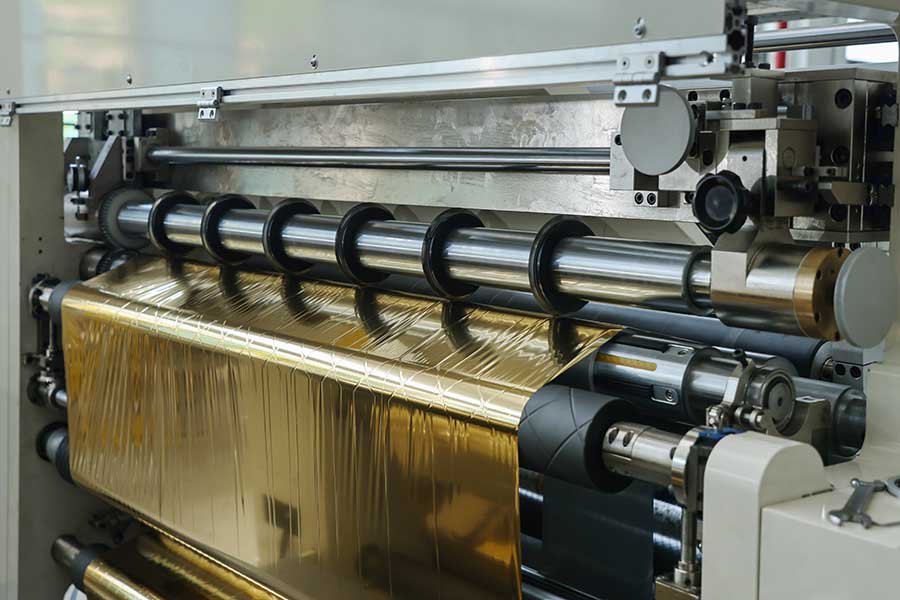
2. Precision and intelligence of tension control system
The foil foil substrate (usually PET film) is very thin and fragile, and the coating on it is prone to cracking. Throughout the entire path from unwinding to unwinding, tension control is the "lifeline" that protects the material.
• Core components: full closed-loop tension sensor, magnetic powder clutch/brake or servo torque control, floating roller mechanism.
• Technical analysis:
◦ Full closed-loop real-time control: The system needs to detect the tension changes in unwinding, winding and intermediate processes in real time, and quickly adjust the torque of the motor through algorithms to keep the tension constant. Especially in the process of dynamic changes from large to small unwinding diameter and rewinding diameter from small to large, the taper tension control algorithm is particularly critical.
◦ Start-stop and acceleration and deceleration control: The moment the machine starts and stops is when the tension fluctuates the most. The intelligent tension control system needs to have a "soft start/soft stop" function to smooth the transition and prevent the foil from being pulled or wrinkled.
◦ Anti-static and dust removal: Unstable tension will lead to friction and electricity, adsorption of dust, and pollution of the foil surface. Stable tension is a prerequisite for maintaining a clean production environment.
• Impact on reliability: Precise tension control can completely eliminate problems such as foil breakage, tensile deformation, and wrinkling, ensure that the winding is neat and tight, and provide qualified master coils for the subsequent high-speed hot stamping process, greatly improving the operation efficiency of the entire production line.
3. The sensitivity and reliability of the correction system
Make sure the edges of the foil roll after slitting are neat and the end face is flat. If it is deviated, it will not only be uneven winding, but also cause unilateral wear during slitting, and in severe cases, it will lead to the scrapping of the entire roll of material.
• Core components: actuators composed of CCD or ultrasonic edge detection sensors, high-response servo motors, precision ball screws or linear motors.
• Technical analysis:
◦ Detection accuracy and speed: The sensor must be able to recognize changes in the edge position of the foil at the micron level and transmit the signal to the control system instantaneously.
◦ Response and execution speed: The actuator needs to adjust the position of the guide roller quickly and smoothly to correct the deviation. Its response speed must match the machine line speed to avoid "excessive correction" or "delay correction".
◦ Anti-interference ability: The system needs to be able to filter out the interference signals caused by slight meandering or vibration inherent in the material itself to achieve stable deviation correction.
• Impact on reliability: A reliable guidance correction system is a guarantee of high-quality finished rolls, avoiding frequent manual intervention and material waste caused by deviations, and achieving stable operation for long periods of unattended operation.
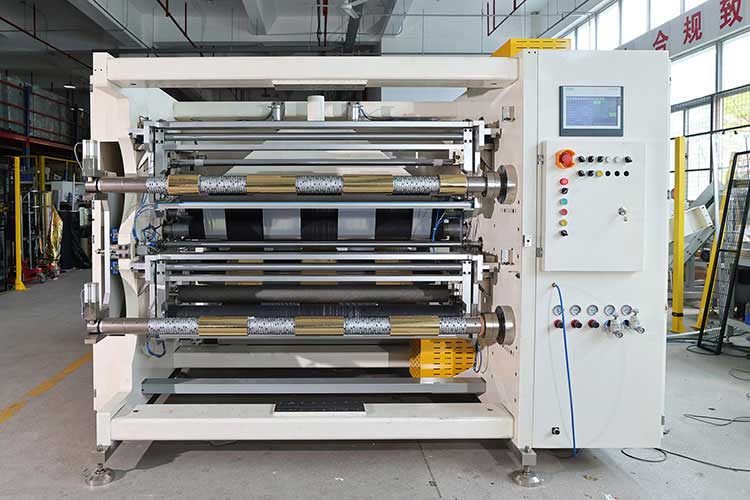
4. Design and control of winding system
The quality of winding is directly related to the user experience of downstream customers. Uneven winding and uneven tightness will lead to poor winding during hot stamping, and even inability to be used on the machine.
• Core components: winding shaft (air expansion shaft), surface winding or center winding mechanism, pressure roller device.
• Technical analysis:
◦ Winding mode: High-end slitting machines often adopt the mixed mode of "surface winding + center torque control". Surface winding (providing contact pressure through the pressure roller) can ensure the tightness of the initial winding; the center torque control automatically adjusts the winding torque with the increase of the coil diameter to ensure the consistent tension of the inner and outer layers, and avoid the phenomenon of "cabbage heart" (tight inside and loose outside).
◦ Rewinding pressure and taper curve: The pressure of the roller needs to be intelligently reduced as the roll diameter increases, and advanced equipment can set complex pressure/torque taper curves to adapt to the characteristics of different materials.
◦ Discharging mechanism: The automatic discharge mechanism can smoothly remove the heavy material coil and avoid bumping damage to the coil end face caused by human operation.
• Impact on reliability: A superior winding system ensures that every finished roll meets "print-grade" requirements, reducing customer complaints and enhancing brand credibility, while automated unloading also enhances equipment safety.
5. Control system and humanized design
This is the "brain" that intelligently integrates all the above hardware units, and it is also the software foundation for long-term stability and easy maintenance of the equipment.
• Core components: industrial PLC/PC-based controller, high-precision servo drive, man-machine interface.
• Technical analysis:
◦ Integration and intelligence: The control system of modern high-end slitting machines integrates parameters such as slitting, tension, and correction in a recipe, which can be called with one click to reduce human setting errors. It has automatic diagnosis, early warning, and logging functions.
◦ Ease of operation: The touch screen interface is intuitive, and the parameter setting is simple and clear. It provides visual tension curves, correction status, etc., which is convenient for operators to monitor.
◦ Maintainability: The modular design allows for easy replacement of key components (such as sensors and motors). The system provides clear maintenance reminders and fault codes, reducing repair time.
• Impact on reliability: A strong control system is the embodiment of the "soft power" of the equipment. It not only optimizes production processes, but also minimizes unplanned downtime through preventive maintenance and quick fault diagnosis, ensuring the overall reliability of the equipment in the long term.
summary
These five elements do not exist in isolation, but are an organic whole that is interrelated and works together. The slitting system is the "skeletal muscle", the tension control is the "nerve", the correction system is the "cerebellum", the winding system is the "hands and feet", and the control system is the "brain".
A highly reliable hot stamping foil slitting machine must have achieved a very high level of all five elements and achieved perfectly matched and optimized results at the system level. When purchasing, users should deeply examine the specific configuration, technical details and actual operating performance of these five aspects, rather than just focusing on the price and slitting speed parameters.


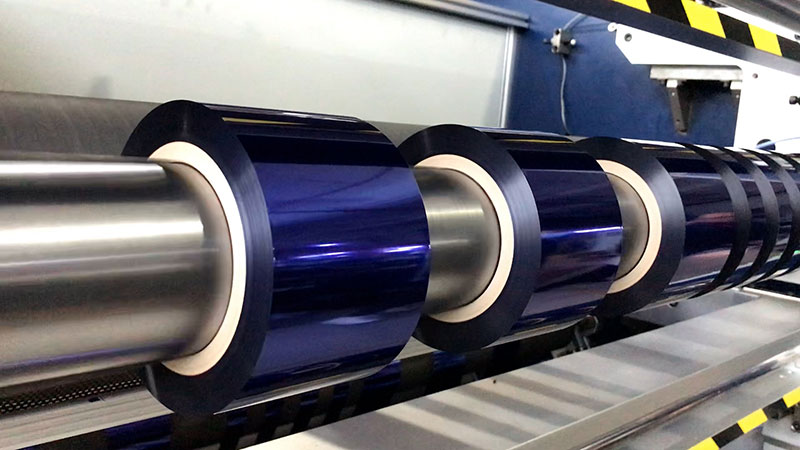
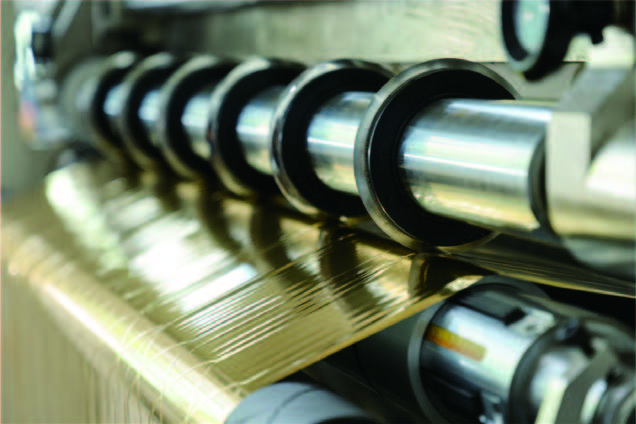
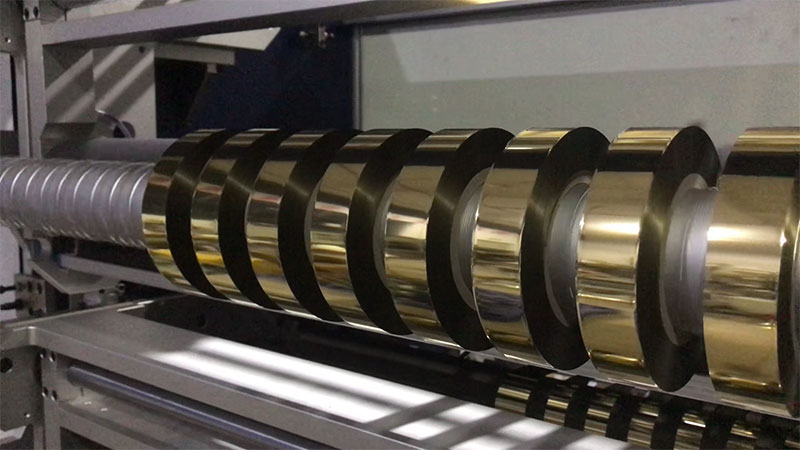
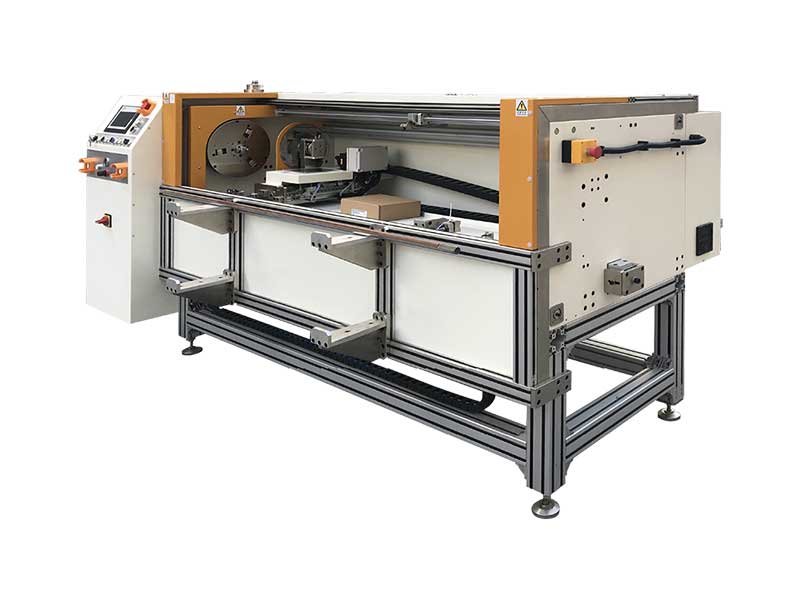 Automatic Foil Roll Cutting Machine
Automatic Foil Roll Cutting Machine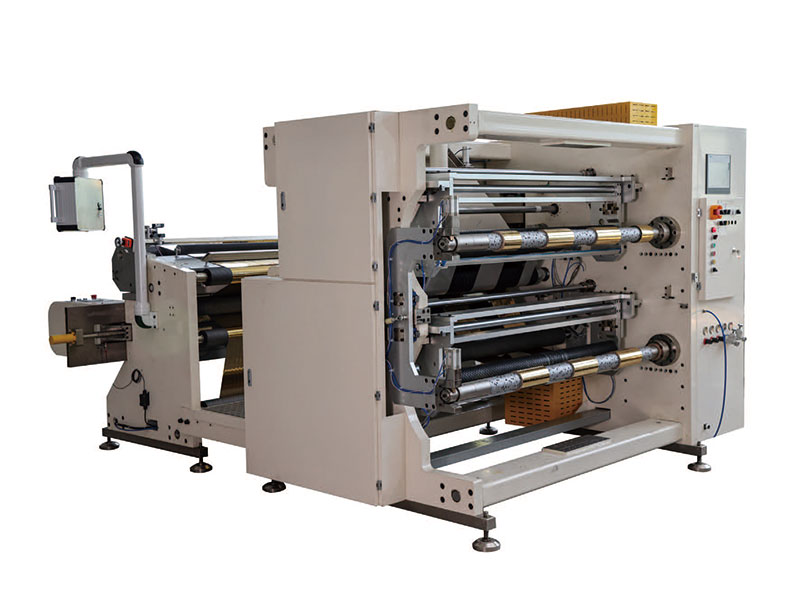 1400mm Hot Stamping Foil Slitting Machine
1400mm Hot Stamping Foil Slitting Machine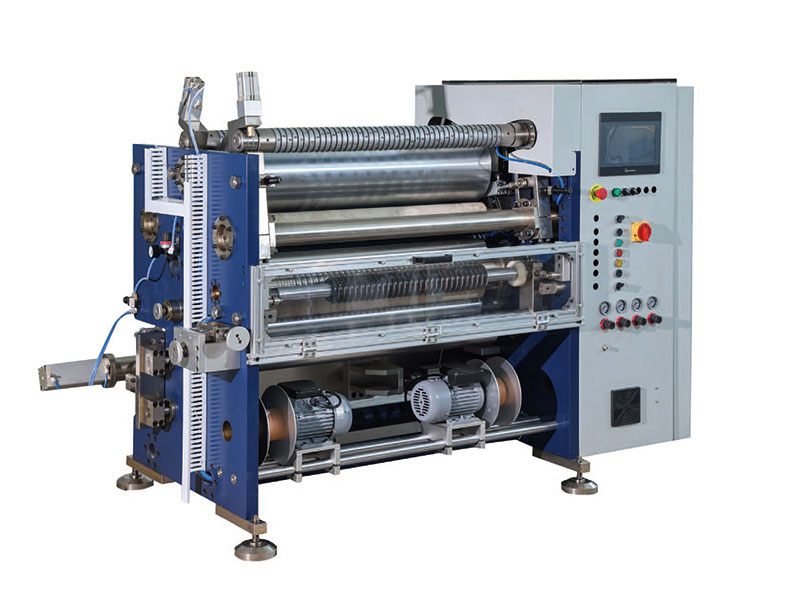 800mm Hot Stamping Foil Slitting Machine
800mm Hot Stamping Foil Slitting Machine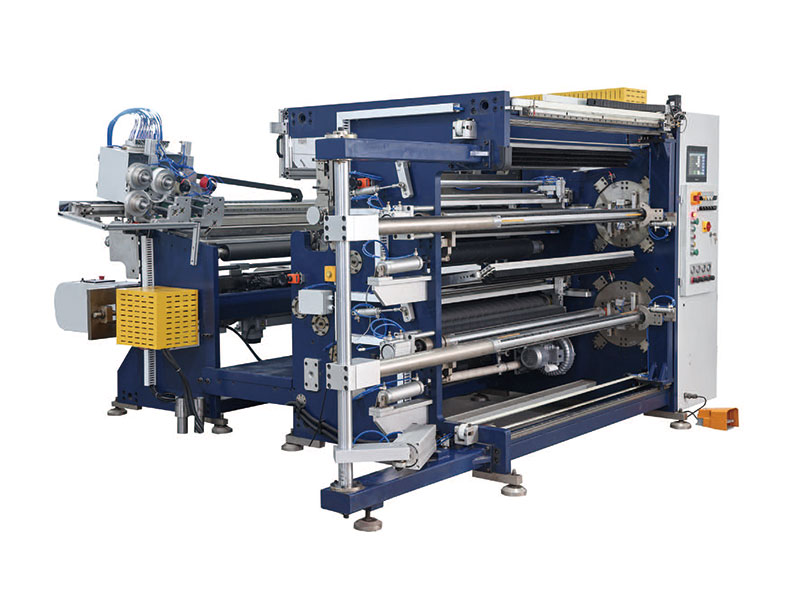 1350mm Hot Stamping Foil Slitting Machine
1350mm Hot Stamping Foil Slitting Machine Manual Foil Roll Cutting Machine
Manual Foil Roll Cutting Machine 1350mm/1600 Foil Slitting Machine
1350mm/1600 Foil Slitting Machine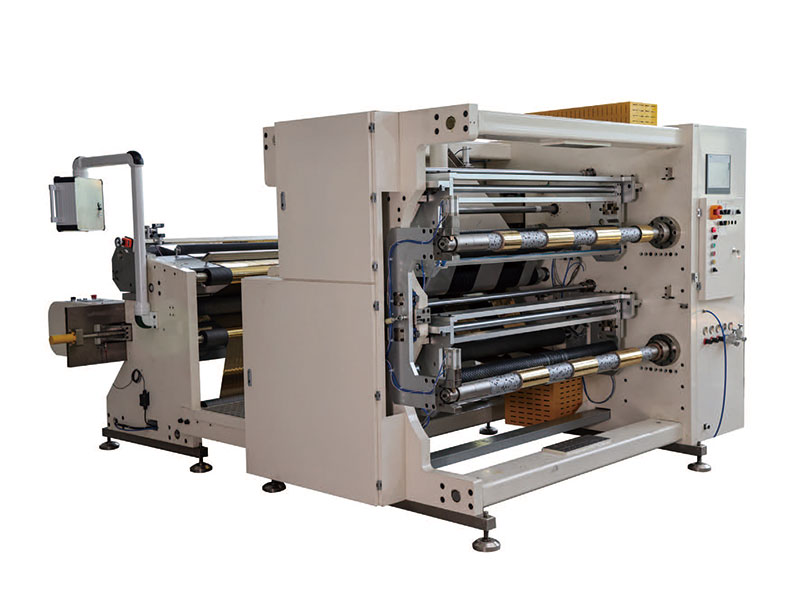 1400mm Copper Foil Slitting Machine
1400mm Copper Foil Slitting Machine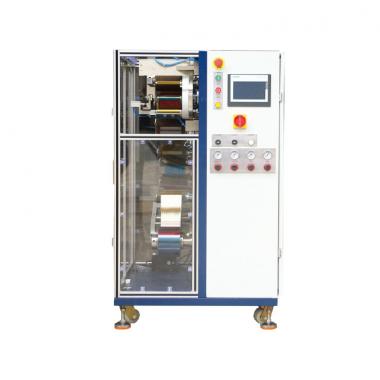 Photo & Card Print Ribbon Rewinding Machine
Photo & Card Print Ribbon Rewinding Machine

